Is the U.S. in recession or not?
Well, the U.S. printed a 3.3% number for growth in the second quarter according to the data released last week. Since then, I have been asking myself why we shouldn’t believe the U.S. is in an expansion right now. After all, the economy does not normally grow 3.3% during recessions.
But as I looked at all the other data outside of the GDP number, it all pointed to recession. In particular, the employment data paint a recessionary picture.
We are pretty fortunate to have nearly 80 years of monthly data on unemployment to use as a historical backdrop. So I have put together the U.S. unemployment data in charts by decade to see what happens to unemployment before, during and after recessions and what type of employment picture characterizes expansion.
Change in unemployment is the right indicator
First, let me make just a few points to explain the graphs.
First point: in the charts, I don’t measure the unemployment rate itself, but rather the year-on-year change in the unemployment rate, because the change in the unemployment rate has been a flawless indicator of recession in every downturn since 1929.
Two other points: the shaded portions of the graphs in gray represent recessions, the portions in white are expansions. The dotted red line is my recession indicator (see post): when the change in unemployment rises 1% or more, we have always had a recession.
Looking at the first chart from 1998-2008, we can see that the y-o-y change in the unemployment rate is 1.4%. Translation? Recession.
But, then again, how do we know that the recession isn’t already over? After all, we just grew 3.3% in Q2. Maybe we had a recession that ended in April, when the second quarter began.
That’s where the historical data come into play. What you should notice from the historical charts is that the change in the unemployment rate does not rise for more than a few months after the recession ends.* The unemployment rate itself may go up, but the year-on-year change does not go up significantly.
For example, March 1991 marked the end of a recession, with unemployment at 6.8%, a full 1.6% higher than March 1990’s 5.2%. However, unemployment continued to rise for 15 months to June 1992 when it reached 7.8%. Nevertheless, year-on-year comparisons never exceeded 1.6% during that time.
It makes sense. After all, the change in the unemployment rate is essentially measuring how much better (or worse) the employment situation has become in the last year. That is not only a good measure for the job market, it is also a very good measure for the overall economy.
So, getting back to my question about the recession ending in April and being behind us, that conclusion doesn’t fit the data. Not only is the unemployment rate still rising, but so is the change in the rate. Comparisons to 2007 show a 1.4% change now. Back in April the number was only 0.5. That’s not a sign that recession has ended.
Expansions
Another thing you should notice from the charts is that the change in unemployment levels really falls off quickly when the economy starts expanding. Look at the shortest expansion in the data series from 1980-1982. Even then, you can see the numbers plummeting from +2.0% to -0.6% in a year’s time. That inverted V-shape in this data series occurs in every business cycle.
This helps us know whether we have left recession. If we don’t see a rapid falloff in the year-on-year numbers, we are probably not in expansion.
The unemployment rate in December 2007 was 5.0%, so treading water compared to right now would mean 6.4% in December 2008 (1.4% y-o-y change). It would be even better if we saw something like 5.9% to confirm the inverted-V pattern that typifies the beginning of an expansion.
Conclusion
Having looked at the historical data and keeping in mind that Q2 GDP was measured from April to June, it is hard to use the GDP numbers to confirm an end to or lack of recession.
The employment numbers and other data like industrial production, retail sales, and personal income all point to a recession that began in January 2008 or earlier. And ultimately, the sooner it began, the sooner it may end.
Change in unemployment rate by decade from the 1930s to present
Source
Bureau of Labor Statistics
Business Cycle Expansions and Contractions – NBER
Related reading
Ahead of the Curve – Joseph Ellis
*The one and only time that the year’s change in the unemployment rate continued to rise more than a few months after the recession had ended was in 1945-1946. In October 1945 the change in the unemployment rate was 2.4%. But it kept rising to 3.2% in May 1946 even though the recession officially ended in October. Unfortunately, we don’t have GDP statistics to find out why, because the quarterly GDP data only dates back to 1947.
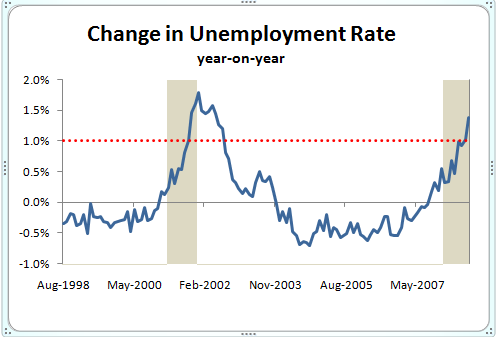
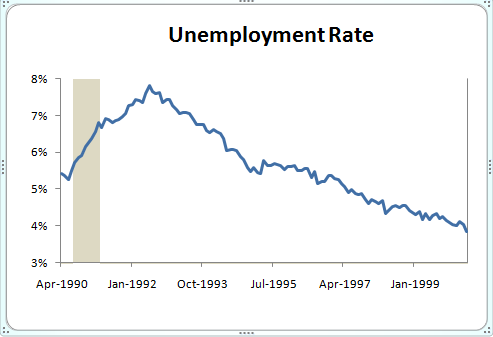
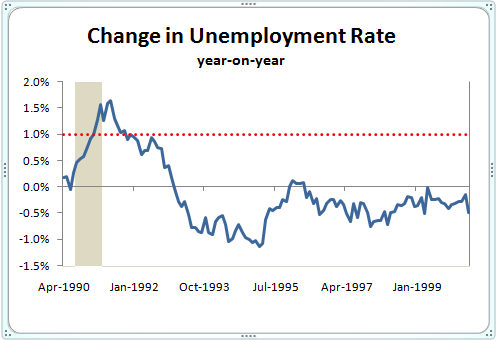
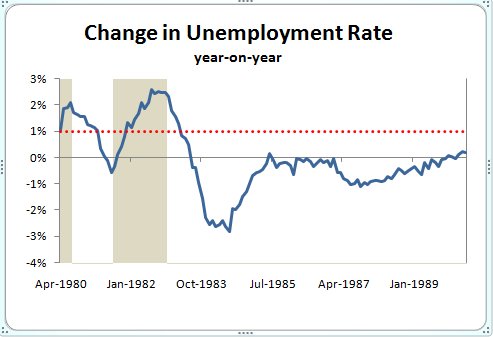
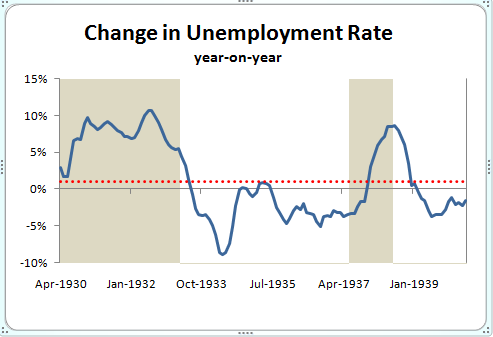
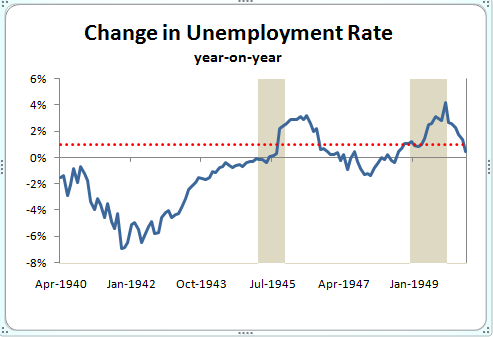
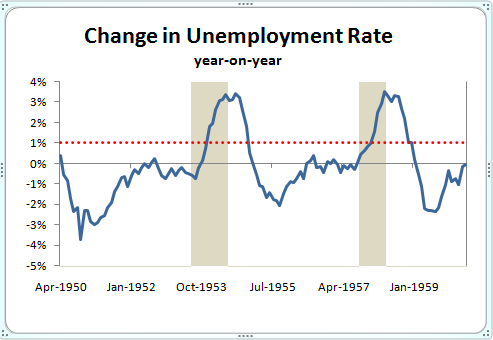
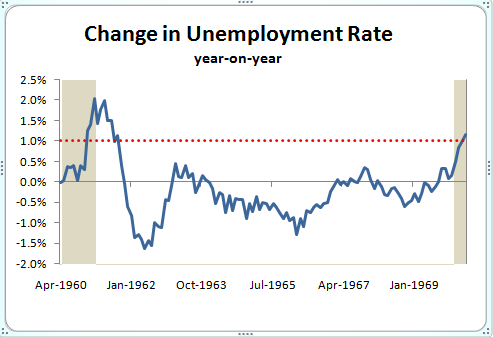
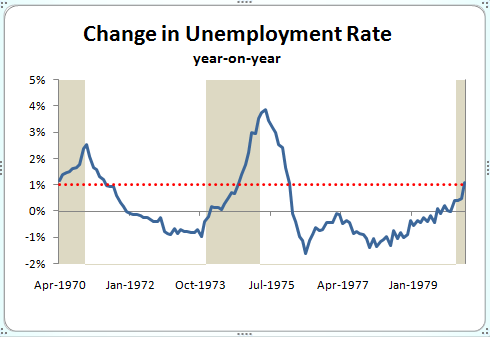

Comments are closed.